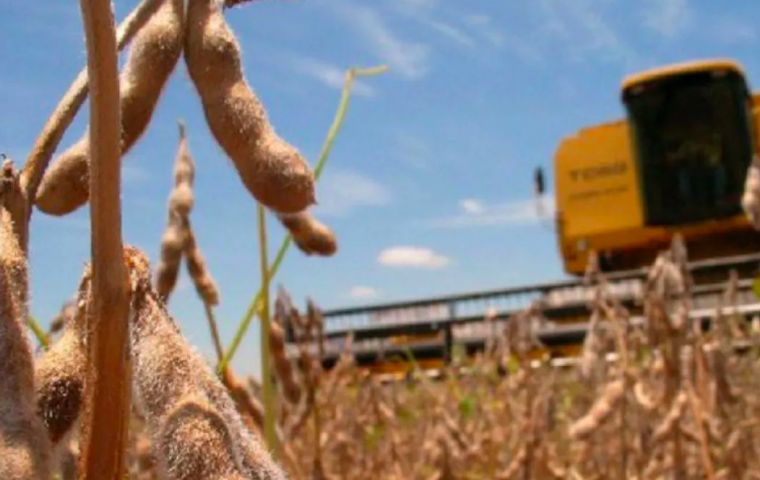MercoPress. South Atlantic News Agency
Argentina soybean output forecast to reach 52 million tons, down 6% year on year
 Argentina is projected to export 8.2 million mt of soybeans in 2019-20, down 10% year on year, the USDA said in its latest world agricultural estimates
Argentina is projected to export 8.2 million mt of soybeans in 2019-20, down 10% year on year, the USDA said in its latest world agricultural estimates Soybean output for Argentina -- the world's third-largest soy producer and exporter -- is forecast to be at 52 million tons, down 4.6% on February estimates and 6% year on year, in 2019-20 crop year (November-October), on dry conditions in Córdoba and Santa Fe, a Buenos Aires Grains Exchange report said on Thursday.
Of the projected planted area of 17.4 million hectares for the 2019-20, only 39% of the soybean crops were in good to excellent conditions in primary soy producing regions, the report said.
A lower Argentine soybean output projection could give a little support to global soybean prices, which are reeling from a coronavirus-led global transportation lock down and African swine fever outbreak in China, world's largest soy importer, market sources said.
According to S&P Global Platts, SOYBEX FOB Santos for April loading was assessed at US$ 343.29/mt, down 2.5% month on month, while SOYBEX FOB New Orleans for April was determined at $342.91/mt, down 1.5% on the month, as of March 11.
Argentina is projected to export 8.2 million mt of soybeans in 2019-20, down 10% year on year, the USDA said in its latest world agricultural supply-and-demand estimates. The country's soybean meal exports are forecast at 30 million mt, up 10%, while soybean oil shipment are projected at 5.8 million mt, up 14% year on year.
But the market holds a bearish outlook toward Argentine soybean complex exports.
Argentine farmers could face tough times in coming months due to lower soy output forecast in 2019-20, which combined with the government's decision to hike export tariffs to 33% in March, from 30% in December could fuel market uncertainty, market sources said.
Because of the higher tariffs on soybean complex, the farmers could also see less incentive in producing the crop in the next crop year starting November 2020.




Top Comments
Disclaimer & comment rulesCommenting for this story is now closed.
If you have a Facebook account, become a fan and comment on our Facebook Page!